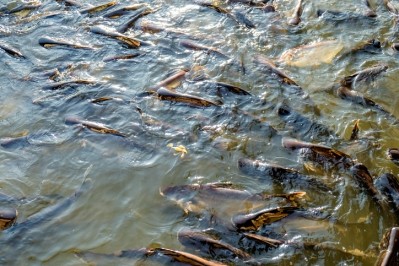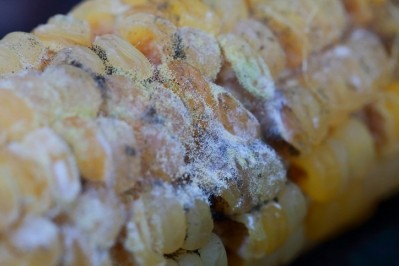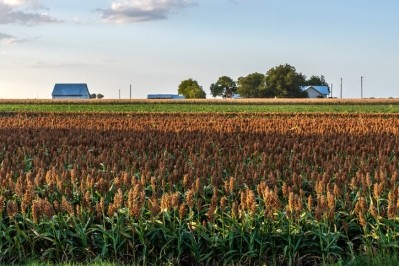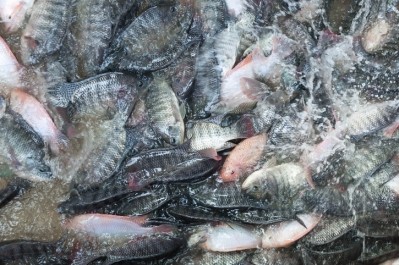Reports from IPPE
Sorghum feed research aimed at growing US market presence
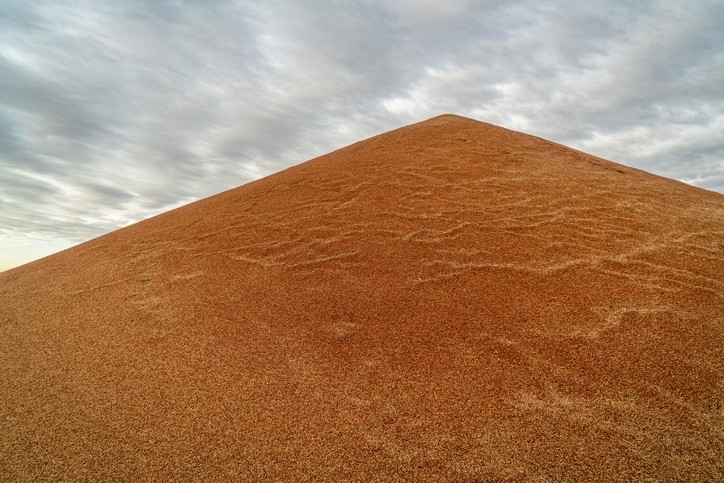
We spoke with Brent Crafton, regional director, and Doug Bice, market development director, both with the United Sorghum Checkoff Program during the International Production and Processing Expo (IPPE) in Atlanta about the work that the checkoff is doing to expand the use of the feed grain in the United States.
US farmer interest in growing the feed grain varies annually. The checkoff continually seeks to develop new market opportunities that have the potential to increase sorghum acreage.
There is potential to expand sorghum’s use as a feed ingredient in poultry rations in the Southeast and in swine feed in the Northeast, said Crafton. “We don’t dismiss any market,” he added.
“Whether it is funneling to the swine industry, to the poultry industry or the gamebird industry it gives producers options,” he said regarding the research and market development work the organization is doing.
Feed for fowl and fish
As part of the effort to support feed use of sorghum, the checkoff recently funded a research project examining sorghum use in feeds for broiler chickens, game birds and farm-raised quail, said Crafton. “We’re trying to get some data related to each of those three species; that’s one of the current nutrition projects that the board has funded through our program right now for the Southeast [part of the US]."
A group at Clemson University is leading the three-year research feeding trials.
“That project is covering [apparent metabolizable energy] AME trials as well as growth trials, and we’re looking at three different types of sorghum on the project,” he said. “It’s currently in year one right now, and we have some industry partners both from the broiler industry and the commercial quail industry so we’re looking at broiler chickens [and] Japanese quail.”
The first step of the project looks at the AME trials for each of the poultry species, said Crafton. The next stage includes growth trials and a cost assessment evaluating sorghum diets and comparable grains, he said.
“We did this through our regional development program to get information more updated for poultry as well as an opportunity to engage the southeastern poultry community,” he added.
Once the feeding study is completed, there also is interest in generating an updated reference guide on the use of sorghum in poultry feed rations, similar to work done in swine, Crafton said.
“It took away a lot of the myths,” Bice said of the swine feeding guide. Including “sorghum only being 90-95% the feed or energy value of corn – not true.”
In addition to the ongoing feeding trial, the checkoff finished a study with the US Grains Council (UGC) last year looking at the use of sorghum in the diets of ducks. The project found that that the feed grain could be included at up to 30% of a ration, the checkoff reported.
Information about the project has generated some interest both in the US and international markets, said Crafton. “We hope in the near future there might be some potential for sorghum in a commercial duck integrator in the US.”
The checkoff also supported research trials feeding different types of sorghum to several aquaculture species, said Bice.
Those feeding trials found that sorghum hominy could be added at up to 25% in tilapia diets, and that sorghum DDGS could have a minimum inclusion rate of 30% in catfish or of 40% in shrimp feeds, the checkoff reported.
The feed ingredient provides a similar starch content to corn and cassava, more tryptophan and threonine than corn with less fat and does not include xanthophyll.
The organization also completed a set of catfish feeding trials in Vietnam that were done in connection with the UGC. The project looked at diets made with sorghum, corn or cassava and found that the feed grain supported fish growth similar to that found with a cassava-based diet.
“We’re starting to see more of the land-based aquaculture operations, like salmon and such, where there might be potential to get sorghum as a feed grain of consideration and that’s something we’re highly impressed with,” said Crafton.
Addressing misconceptions
Despite some of the work done to dispel myths about sorghum as a feed ingredient and development of modern cultivars of the feed grain, there continue to be some questions about its use, said Bice.
“There’s a lot of misconceptions about sorghum still in the livestock feed world,” he said. “[Some grain buyers] thought that sorghum has high tannins and that there’s an issue with digestibility, and that’s not an issue with US sorghum."
About 99% of the sorghum strains raised in the US do not have tannins, added Crafton. “There’s still a lot of misinformation about tannins in US sorghum.”
Previously, there also was a concern that the feed grain could alter the color of poultry meat, said Bice. “We don’t see that anymore – there used to be an issue with the yellowing of the meat and discoloration of poultry meat that’s not the case with the new cultivar sorghums,” he added.
However, while protein digestibility has improved and levels of kafirin are lower than they once were, there is still work remaining in that area, said Bice.
Although there have been questions about the development of new strains of sorghum, at this point, the feed grain is entirely non-GMO, added Crafton.
There also can be questions about the presence of mycotoxins in the feed grain, said Bice. However, the crop is not prone to issues like aflatoxin.
“Part of it is storage methodology, but most of it is inherent in the grain and its ability to not absorb moisture, to not hold moisture the same way that other grains do,” he said. “But it’s also where it’s stored, how long it’s stored [and] things of that nature.”
